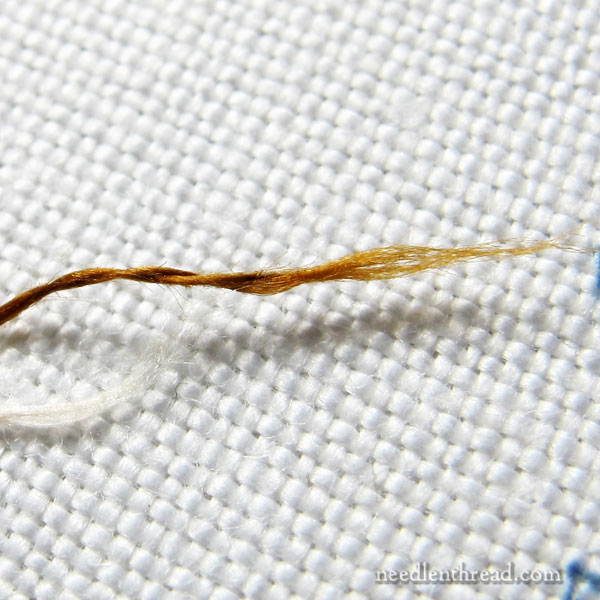This is going to be the shortest stitch tip I’ve probably ever written.
If you know me and you’ve been following along on Needle ‘n Thread for a bit, then you know I tend to blather too much when it comes to embroidery.
This one won’t require a whole lot of blathering.
The question that came in has to do with fuzz and thread length when embroidering. And it’s a good reminder for experienced stitchers and newbies alike.
So here it goes…

I’ve been asked this question before, so I figured it was worth a short article. Here’s the email that recently came in:
Mary, I read something about thread length on your blog and changing the thread when it needs to be changed. I cut my cotton DMC embroidery floss about 18 in. long. The thread looks ok while I stitch, but there’s sometimes fuzz around the stitches. Sometimes it happens after I’m only halfway through the thread. Should I really be changing the thread every 9 in. Is that normal? The stitches look ok, but I end up picking out fuzz with tweezers when I’m finished. It shows up in photos better than the naked eye, but sometimes I can even see it with the naked eye. Does this have to do with the cotton thread? How do I eliminate it?
I too use about an 18″ – 20″ length of stranded cotton when I stitch. To illustrate the fuzzy problem this reader is experiencing, I stitched a line of stem stitch. About halfway through that length of thread, this is what the eye-end of my thread looked like:

As the needle and thread pass through the fabric, the eye-end of the thread takes a beating, and it will start to fuzz. As you pass through the fabric the fuzz leaves little shards around the beginning and ends of stitches. If the shards are long enough, they’ll often leave a “glow” of fuzz around otherwise perfect stitches.
This happens with any stranded cotton and with other embroidery threads, too. You won’t normally see it with threads made from filament silk, but you will see it with spun silk, with wool, and with other types of cotton threads.

The fix is simple. Keep an eye on the eye-end of your thread, and trim the ends occasionally to remove the fuzzy bits.
Now, if the working thread starts loosing its noticeable twist or its sheen and it’s getting fuzzy on the working length, then you need to switch out the entire thread. But if the thread still looks good, just trim it!
Hope your week is going well!